Salads
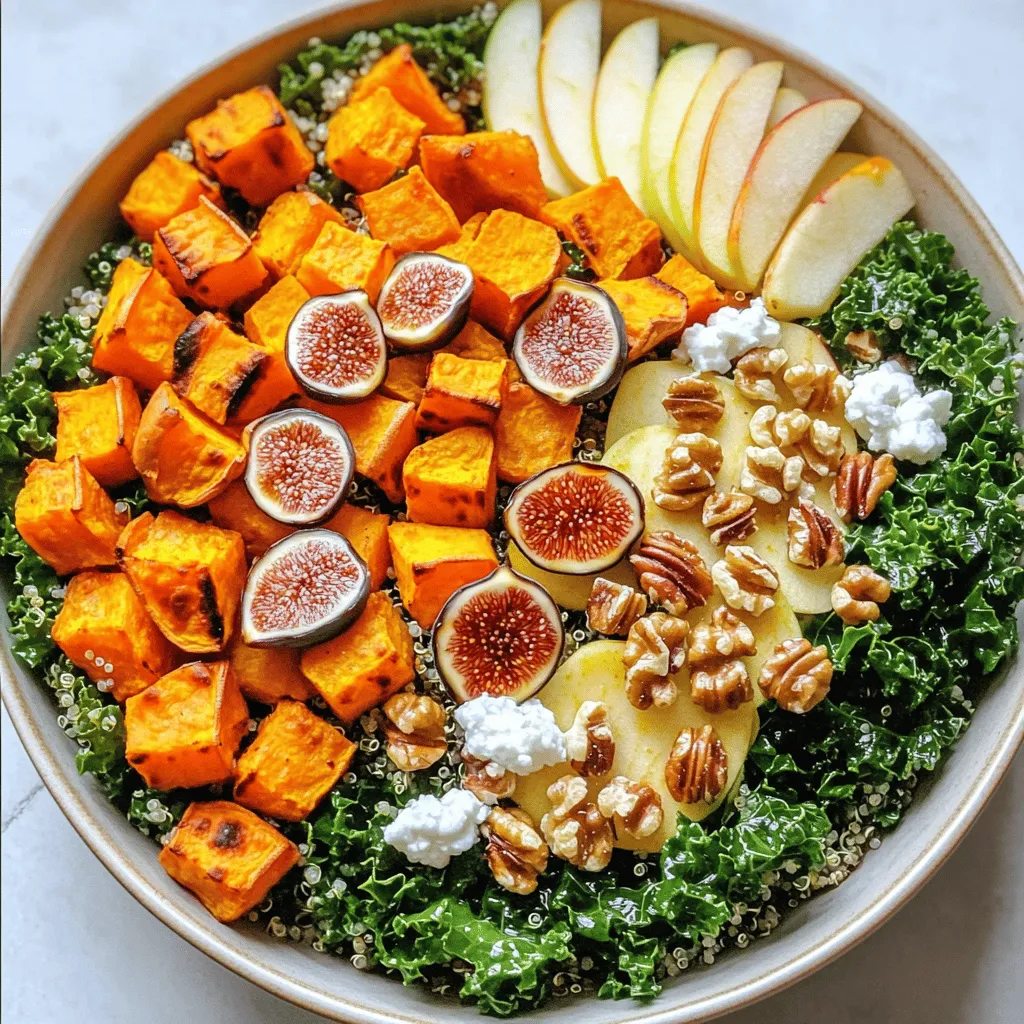
Harvest Bowls with Fig Balsamic Vinaigrette Delight
Ready to elevate your mealtime? These Harvest Bowls with Fig Balsamic Vinaigrette are a tasty treat! Packed with flavors from roasted sweet potatoes, fresh kale,
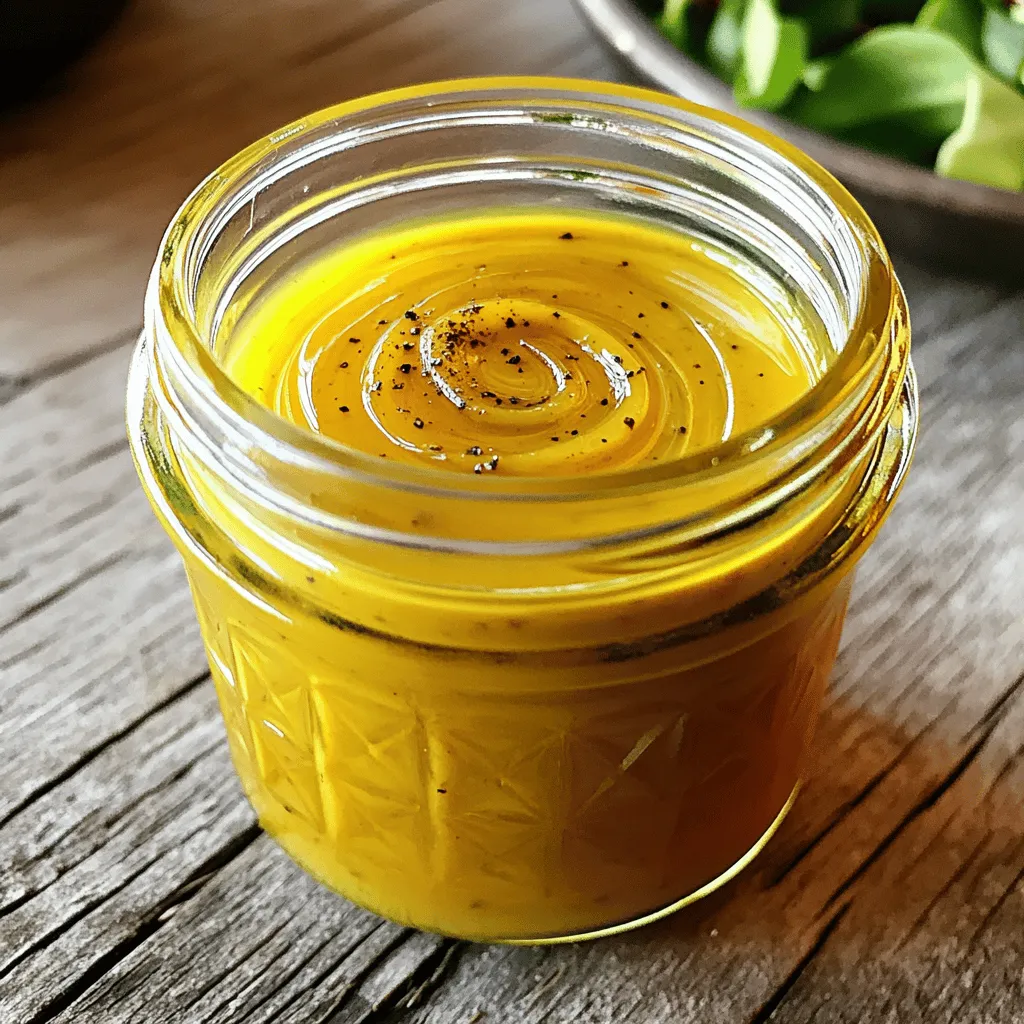
Easy Honey Dijon Vinaigrette Dressing Recipe Delight
Looking for a quick and tasty dressing? My Easy Honey Dijon Vinaigrette will elevate your meals in minutes! With just a few simple ingredients like
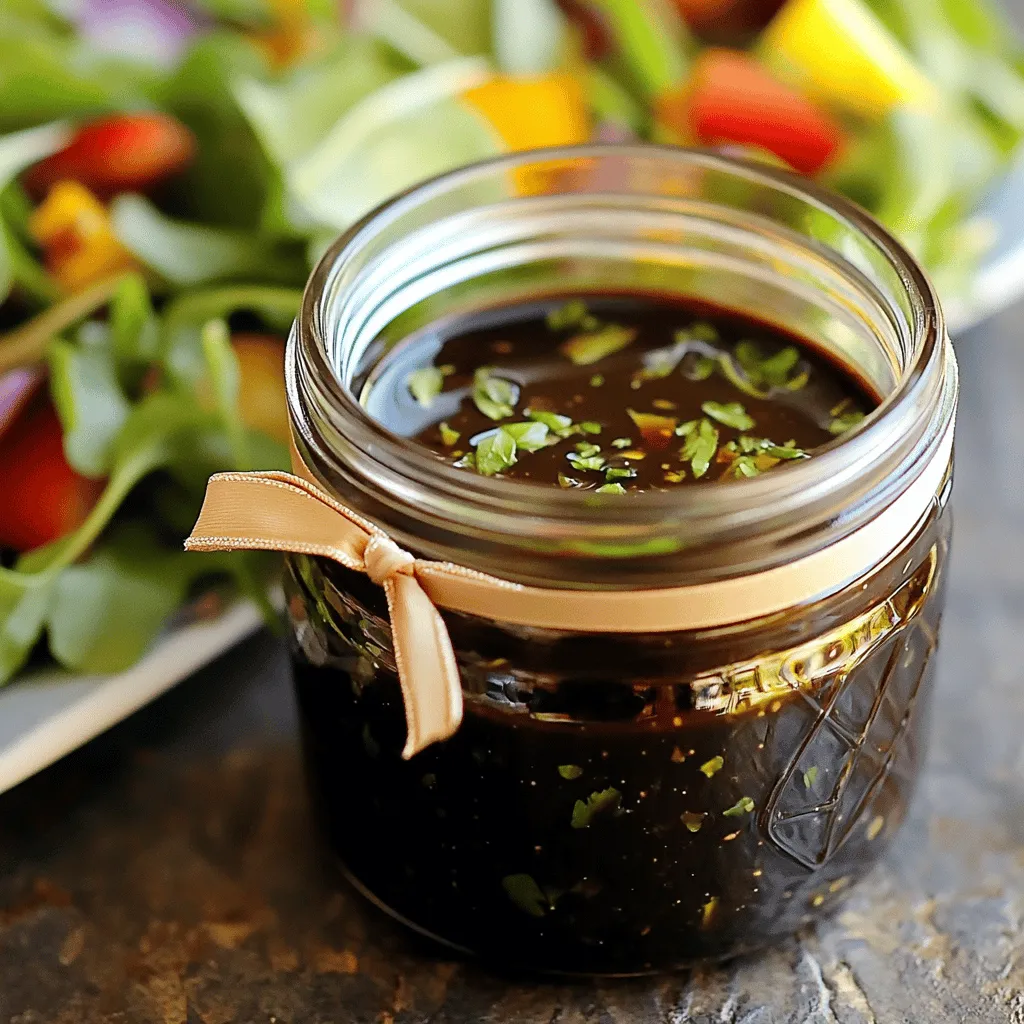
Healthy Balsamic Vinaigrette Simple and Flavorful Recipe
Want a simple way to add flavor to your meals? This Healthy Balsamic Vinaigrette recipe is a game changer! It’s packed with good-for-you ingredients and
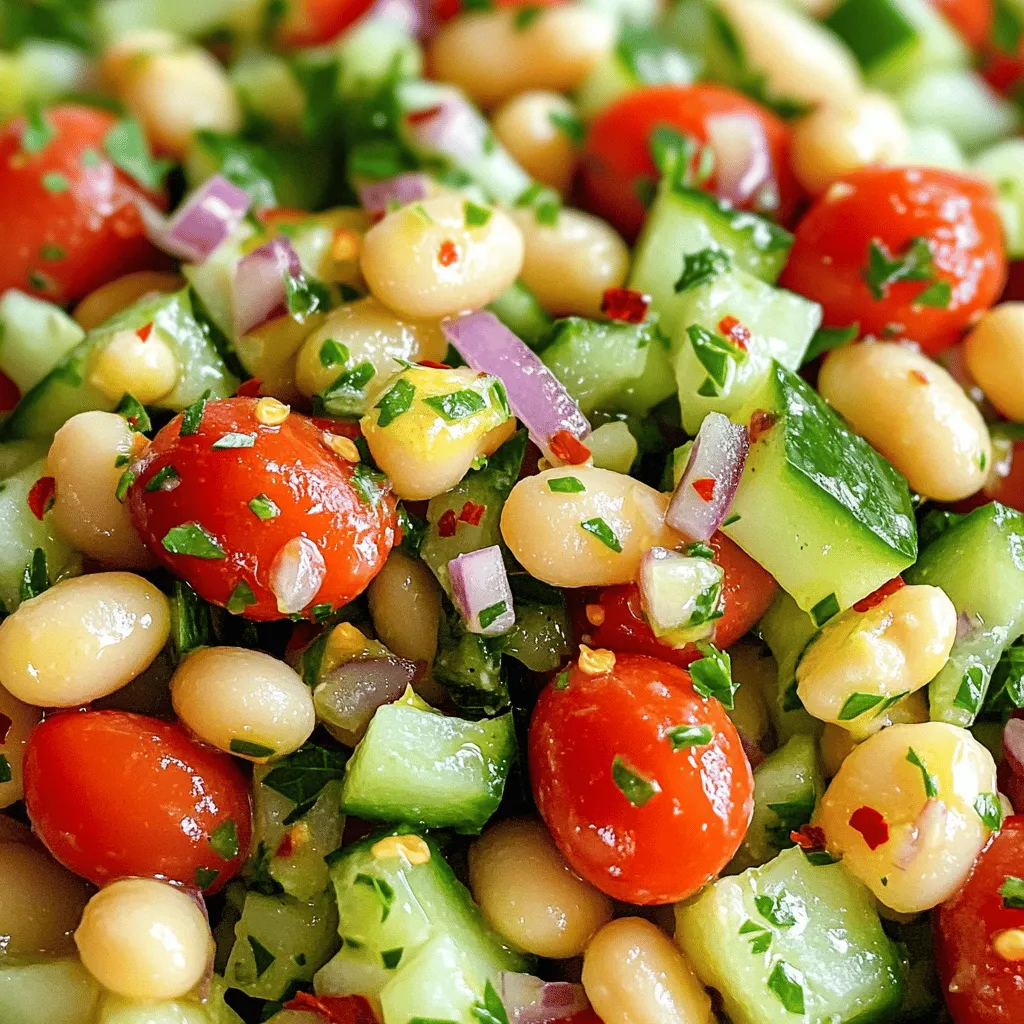
Cannellini Bean Salad Fresh and Flavorful Delight
Are you ready to whip up a fresh and flavorful Cannellini Bean Salad? This dish offers a great mix of taste and nutrition, making it
![Fresh basil is the star of this vinaigrette. It gives a bright, fresh taste. You need one cup of tightly packed basil leaves. Look for deep green leaves that smell fragrant. Avoid any yellow or wilted leaves. Rinse them well under cold water to remove dirt. Then, dry them gently with a towel. Extra virgin olive oil is key for a rich flavor. You’ll need half a cup for this recipe. The oil adds a smooth texture and balances the acidity of lemon. Choose a high-quality oil for the best results. Look for one with a fruity taste that complements the basil. You'll need some more simple ingredients to bring out the flavor: - 1/4 cup freshly squeezed lemon juice - 2 tablespoons honey or maple syrup (for a vegan option) - 1 teaspoon Dijon mustard - 1 clove garlic, finely minced - Salt and freshly ground black pepper, to taste The lemon juice adds a zesty kick. Honey or maple syrup sweetens the vinaigrette, balancing the tartness. Dijon mustard gives it a touch of creaminess and depth. Garlic adds a nice punch, making the flavor pop. Finally, season with salt and pepper to taste. For the complete recipe, you can check out the Full Recipe. First, rinse your fresh basil leaves under cold running water. This step helps remove dust and dirt. After rinsing, gently pat them dry using a clean paper towel. This keeps the leaves fresh and ready for blending. Now, grab your food processor or high-speed blender. Add the packed basil leaves, fresh lemon juice, honey or maple syrup, Dijon mustard, and the minced garlic clove. These ingredients work together to create a bright and zesty flavor. Pulse the mixture a few times until the basil is finely chopped. Then, while blending, slowly drizzle in the olive oil. This step forms a creamy and smooth vinaigrette. Pause to taste your dressing. Add salt and freshly ground black pepper as you like. Blend briefly again to mix in the seasoning. Now your vinaigrette is ready! For the best taste, chill it in the fridge for at least 30 minutes. Enjoy your fresh basil vinaigrette with salads or grilled veggies. For the full recipe, check the instructions above. To make your fresh basil vinaigrette truly shine, focus on the quality of your ingredients. Use fresh basil, as it brings a vibrant flavor. Look for bright green leaves without any brown spots. For the olive oil, choose high-quality extra virgin. It adds depth and richness. Freshly squeezed lemon juice is key. It gives a bright, zesty kick. If you want a hint of sweetness, try honey or maple syrup. You can also add a pinch of red pepper flakes for an exciting twist. Store your vinaigrette in a clean, airtight jar. This keeps it fresh and prevents strong odors from other foods. It’s best to chill it in the fridge. The flavors will meld beautifully. Just remember to shake or stir before use. The vinaigrette may separate, and that’s normal. Use it within one week for the best taste. You can also freeze small portions. Just pour it into ice cube trays. Once frozen, transfer the cubes to a zip-top bag. This way, you can enjoy it later. This vinaigrette pairs well with many dishes. Drizzle it over a garden salad for a refreshing touch. It’s also fantastic on grilled veggies. Try it on roasted potatoes or as a marinade for chicken. You can even use it as a dip for fresh bread. For a fun twist, add it to pasta salads for a burst of flavor. The options are endless! To see the full recipe, check out the [Full Recipe]. {{image_4}} You can change the sweetener in this vinaigrette to suit your taste. Honey adds a nice touch, but you can also use maple syrup. If you want a low-calorie option, try agave nectar or stevia. Each sweetener gives a different flavor, so feel free to experiment. You might find a new favorite! Fresh basil shines in this recipe, but other herbs work too. Try using cilantro for a fresh twist or parsley for a milder flavor. Mint adds a bright note, perfect for summer salads. Mix and match herbs to create your own unique vinaigrette. Each herb brings its own magic to the dish. If you love creamy dressings, I have a tasty option for you. Add a few tablespoons of Greek yogurt or sour cream to the mix. This will give your vinaigrette a rich texture. Blend it well with the other ingredients for a smooth finish. This creamy twist is great on salads or as a dip for veggies. It makes every bite more delightful! For the complete guide, check out the Full Recipe. After making your Fresh Basil Vinaigrette, store it in a clean jar. Seal it tightly to keep air out. Place the jar in the fridge right away. This helps keep the flavors fresh. Your vinaigrette stays good in the fridge for about 5 to 7 days. Over time, the vibrant flavor of the basil may fade. Always check for any off smells or changes in color before using. If it looks or smells odd, it’s best to toss it. You can freeze this vinaigrette if you want to keep it longer. Pour it into ice cube trays for easy use later. Once frozen, pop the cubes into a freezer bag. This way, you can grab a cube or two whenever you need a burst of flavor. Just remember to thaw it in the fridge before use. You can use dried basil, but fresh gives better flavor. Dried herbs lose some taste over time. If you use dried basil, use one-third the amount. So, for one cup of fresh basil, use one-third cup of dried. The taste will be different, but it can still work in a pinch. You can store Fresh Basil Vinaigrette in the fridge for up to one week. Keep it in a clean jar with a tight lid. The flavors meld together as it sits. Just give it a shake before using. If it separates, that’s normal. This vinaigrette adds a bright taste to many dishes. It works great on salads, especially those with mixed greens. Drizzle it over grilled vegetables for a fresh kick. You can also use it as a marinade for chicken or fish. It’s perfect for summer dishes! For the full recipe, check out the details above. In this post, we explored making a fresh basil vinaigrette. We looked at key ingredients, like fresh basil and olive oil. We covered preparation steps for mixing and blending. Useful tips helped enhance flavor and storage methods. Variations offered sweeteners and herb choices. Remember, fresh ingredients make a big difference. Enjoy your vinaigrette on salads, pasta, and more. It's a simple way to add flavor to your meals. Get creative and have fun in the kitchen!](https://roastedflavors.com/wp-content/uploads/2025/07/a11a5d63-9d24-4557-a242-14106c096858.webp)
Fresh Basil Vinaigrette Flavorful and Simple Recipe
If you love vibrant flavors, you’ll adore my Fresh Basil Vinaigrette recipe. It’s quick, easy, and brightens up any dish. With fresh basil and simple
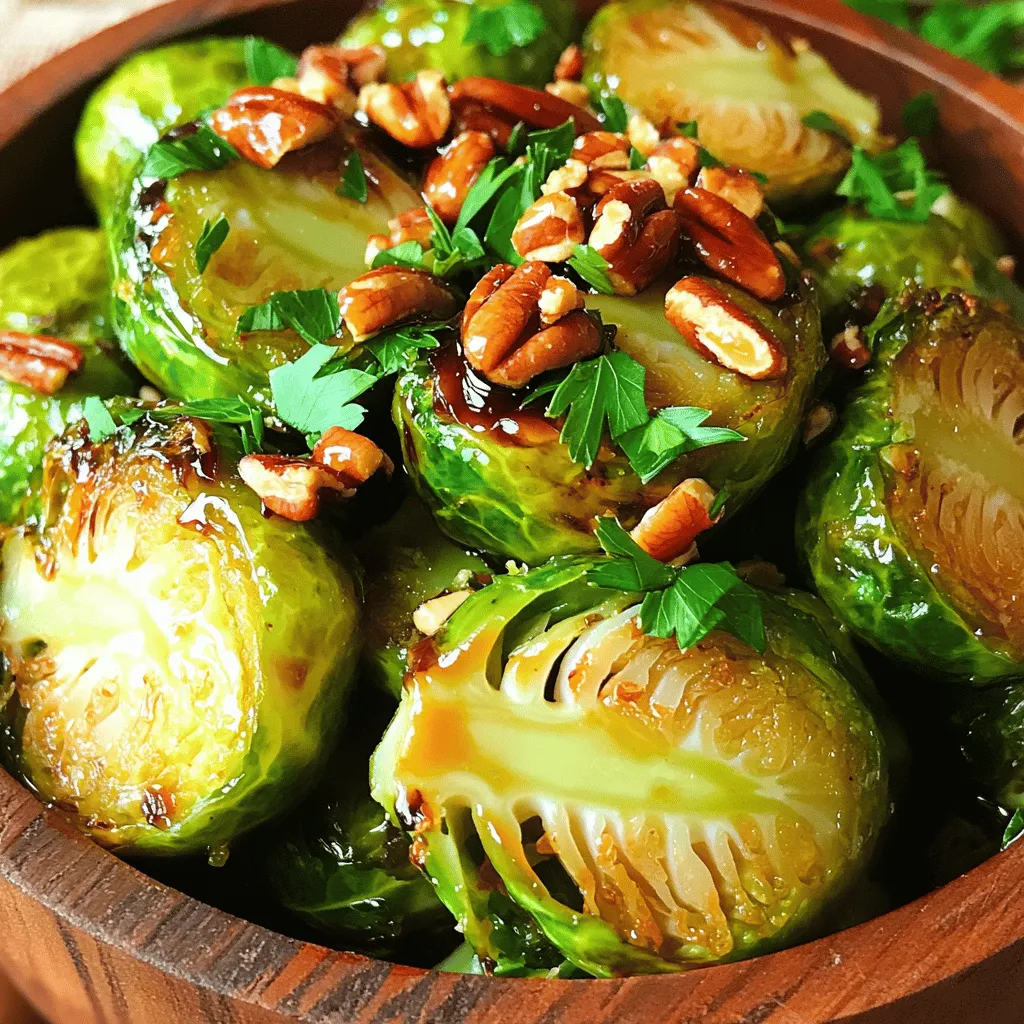
Roasted Maple Brussels Sprouts Flavorful and Simple Recipe
Are you ready to transform Brussels sprouts into a sweet and savory delight? In this simple recipe for Roasted Maple Brussels Sprouts, I’ll show you
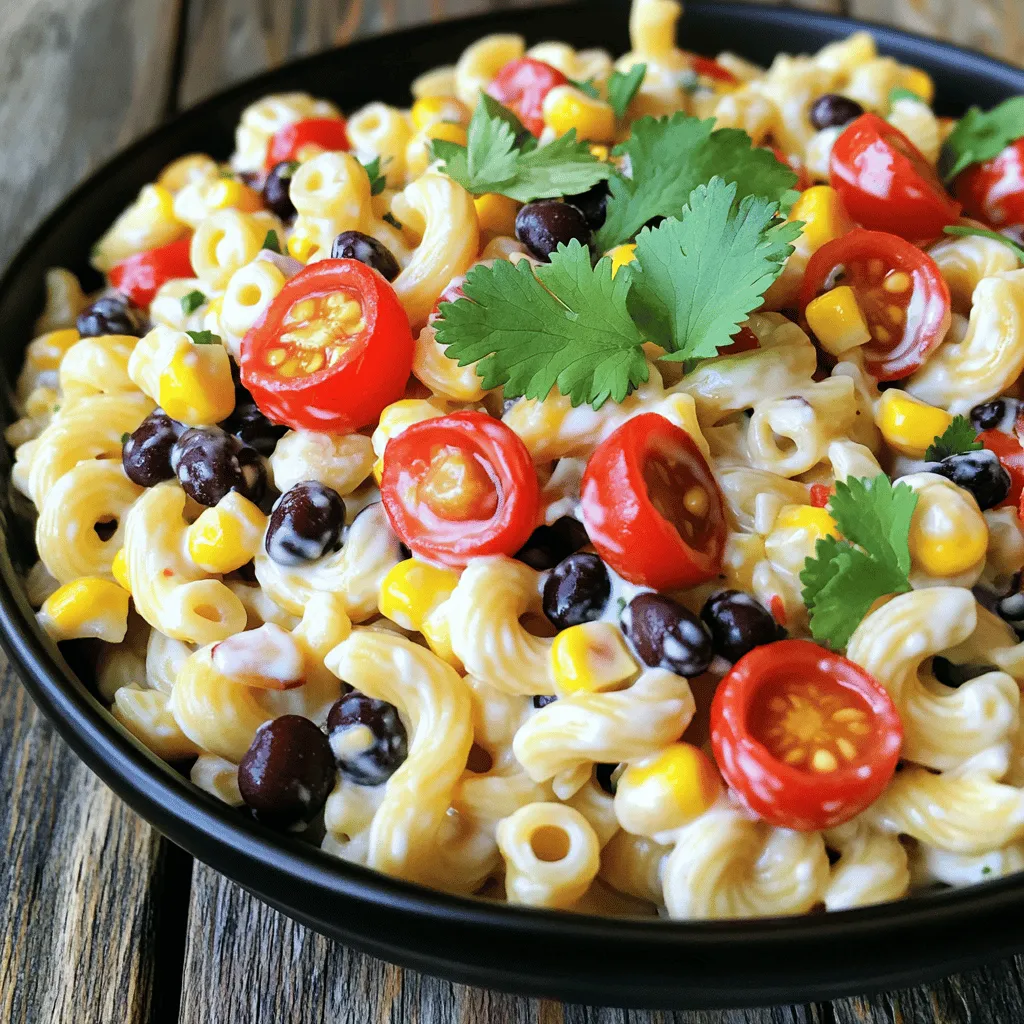
Southwest Chipotle Pasta Salad Flavorful Fresh Delight
Craving a dish that’s both tasty and easy to whip up? Look no further! My Southwest Chipotle Pasta Salad packs a punch with flavor and
. You can create a delicious dish using simple ingredients. Brussels sprouts roasted with balsamic and honey give you great flavor and health benefits. Each step, from prep to storage, helps you make the most of your meal. Don't forget to try different spices or nuts to make your dish unique. Store leftovers right, and enjoy them later. This dish is not only tasty but also good for you. Happy cooking!](https://roastedflavors.com/wp-content/uploads/2025/07/b06ba181-8208-4a7c-840c-405c877a6d92.webp)
Brussels Sprouts with Balsamic Honey Flavor Boost
Want to bring life to your dinner table? Discover how to make Brussels Sprouts with Balsamic Honey! This dish combines crisp Brussels sprouts with the
![To make a delicious lemon vinaigrette, you need a few key items. Here’s what you’ll need: - 1/4 cup freshly squeezed lemon juice - 1/2 cup high-quality extra virgin olive oil - 1 tablespoon Dijon mustard - 1 tablespoon honey or pure maple syrup (to taste) - 1 small garlic clove, finely minced - Sea salt and freshly ground black pepper, to taste - 1 teaspoon finely chopped fresh herbs (such as parsley, basil, or chives) for garnish These ingredients work together to create a bright and zesty flavor. High-quality olive oil is very important. It adds richness and depth to your vinaigrette. Look for extra virgin olive oil. It has the best taste and is less processed. The oil should smell fresh and have a green color. This type of oil enhances the overall flavor of the dressing. Fresh herbs can take your vinaigrette to the next level. They add color and flavor. You can use herbs like parsley, basil, or chives. Just chop them finely before adding. This small step makes a big difference. It adds a fresh touch that brightens up any salad or dish. For the full recipe, check out the complete instructions. To start, gather your ingredients. You need lemon juice, Dijon mustard, honey, and garlic. I like to use fresh lemon juice for the best taste. In a small bowl, pour in 1/4 cup of lemon juice. Add 1 tablespoon of Dijon mustard, 1 tablespoon of honey, and 1 small minced garlic clove. Whisk these together until smooth. This mix forms the base of your vinaigrette. Next, it’s time to emulsify. While you whisk, slowly pour in 1/2 cup of extra virgin olive oil. Drizzle it in little by little. This step helps blend the oil with the other ingredients. Keep whisking until your dressing looks creamy and well-mixed. You want it to be smooth and uniform, not separated. Now, it’s time to add flavor. Sprinkle in a pinch of sea salt and some freshly ground black pepper. Taste your vinaigrette. If it needs more sweetness, add a bit more honey. For extra zing, squeeze in a little more lemon juice. Finally, fold in 1 teaspoon of chopped fresh herbs like parsley or basil. This adds a burst of flavor and a pop of color. You can find the Full Recipe to make this delicious dressing easily! To make a great lemon vinaigrette, focus on balance. The bright lemon juice needs to mix well with the oil. Use a 1:2 ratio of lemon juice to oil for best results. This blend keeps the dressing fresh without being too sour. Taste your dressing often as you mix. Adjust the flavors until they sing together. Sweetness helps balance the sourness of lemon. You can add honey or maple syrup to suit your taste. Start with the recommended tablespoon and add more if you like it sweeter. For more acidity, squeeze in extra lemon juice. This way, your vinaigrette can fit your dish perfectly. Remember, small changes can make a big difference. One common error is not whisking enough while adding oil. This can lead to a broken vinaigrette. Always whisk vigorously as you drizzle in the oil. Another mistake is using low-quality oil or lemon juice. High-quality ingredients make your dressing shine. Lastly, don’t skip seasoning. Salt and pepper bring all the flavors together. Keep these tips in mind, and your lemon vinaigrette will impress everyone. For the complete recipe, check out the Full Recipe section. {{image_4}} Lemon vinaigrette is a simple base that you can change to fit your taste. Here are some fun ways to switch it up. You can add fruits to your lemon vinaigrette for a sweet twist. Try mixing in fresh berries, like strawberries or blueberries. They add color and a slight sweetness. You can also chop apples or pears for a crunchy bite. Nuts like walnuts or almonds can give your dressing a nice texture. Toasted nuts add a warm flavor. Just chop them small before mixing them in. Fresh herbs can change the flavor of your lemon vinaigrette. You can use basil for a sweet note or cilantro for a fresh taste. Try mint for a refreshing kick. If you like a bolder flavor, add dill or tarragon. Mix and match herbs to find your favorite blend. The more herbs you use, the more flavor you get! While olive oil is tasty, you can try other oils too. Avocado oil gives a smooth texture and a light flavor. If you want a nutty taste, use sesame oil. For sweeteners, honey is great, but you can try agave or even fruit purees. Each option gives a different flavor that can change your dressing. Experimenting will help you discover new favorites. For the full recipe, check out the [Full Recipe]. To store your lemon vinaigrette, pour it into a clean jar with a tight lid. This keeps air out and helps the flavors stay fresh. You can also use a small bowl covered with plastic wrap. Refrigeration is best for keeping it tasty. Homemade lemon vinaigrette lasts about one week in the fridge. Always check the date when you make it. If you notice any changes in smell or color, it’s best to toss it. For longer storage, consider freezing it in small portions. Just thaw it in the fridge before use. Look for these signs to know if your dressing is bad: - Unpleasant or sour smell - Change in color or texture - Visible mold or separation If you see any of these signs, it's safer to throw it away. Enjoy your zesty lemon vinaigrette with peace of mind! For the full recipe, check the earlier section. Yes, you can make lemon vinaigrette ahead of time. It tastes even better after resting. I suggest making it a day in advance. This will let the flavors blend nicely. Store it in a jar with a lid. Keep it in the fridge until you’re ready to use it. Lemon vinaigrette is very versatile. It works great on salads, especially green salads. Drizzle it over roasted vegetables for a fresh kick. You can also use it on grilled chicken or fish. It adds a zesty touch that brightens the dish. Try it on grain bowls or pasta salads too! Adjusting lemon vinaigrette is simple. If you're vegan, use maple syrup instead of honey. For gluten-free diets, ensure your mustard is gluten-free. You can also change the type of oil. Use avocado oil for a different flavor. If you need it to be lower in calories, reduce the oil and add more lemon juice. This keeps the taste fresh and light. Lemon vinaigrette dressing enhances many dishes with fresh flavors. We discussed essential ingredients, like high-quality olive oil and fresh herbs. I provided step-by-step instructions to help you create the perfect blend. You learned to achieve the right flavor balance and customize it to your tastes. Remember to store your dressing correctly for the best taste. Now, you can enjoy delicious lemon vinaigrette in your meals. Happy cooking!](https://roastedflavors.com/wp-content/uploads/2025/07/0f2771fb-ae94-4aed-92d8-927c7dfef188.webp)
Lemon Vinaigrette Dressing Simple and Fresh Recipe
Are you ready to add a burst of flavor to your meals? This simple Lemon Vinaigrette Dressing is fresh, zesty, and easy to make. With
![To make this tasty dressing, gather these simple ingredients: - 1/2 cup balsamic vinegar - 1/2 cup extra virgin olive oil - 1 tablespoon Dijon mustard - 1 tablespoon honey (or maple syrup for a vegan option) - 1 teaspoon garlic powder - 1 teaspoon onion powder - 1/2 teaspoon sea salt - 1/4 teaspoon freshly ground black pepper - 1 tablespoon fresh herbs (like chopped basil or oregano) Choosing high-quality balsamic vinegar and olive oil makes a big difference. Look for balsamic vinegar that is thick and rich. This adds depth to your dressing. A good olive oil should be extra virgin for the best flavor. You want it to taste fresh and fruity. Check the label for quality, as this will enhance your dish. If you don't have honey, you can use maple syrup. This is a great vegan choice. If you want a different flavor, try agave syrup. For the herbs, fresh is best, but dried herbs work too. Just use less, as dried herbs are stronger. Start by gathering all your ingredients. You will need balsamic vinegar, olive oil, Dijon mustard, honey, garlic powder, onion powder, sea salt, black pepper, and fresh herbs. Measure out each one before you start. This will help you move quickly and avoid mistakes. I always find it easier to have everything ready. In a medium bowl or a sturdy jar, pour in 1/2 cup of balsamic vinegar. Then, add 1 tablespoon of Dijon mustard and 1 tablespoon of honey. Use a whisk or a fork to mix these until smooth. Next, slowly add 1/2 cup of extra virgin olive oil while whisking. This step is key to getting a nice, thick dressing. If you use a jar, just add the olive oil, seal it, and shake well. Now, it’s time to add the spices. Sprinkle in 1 teaspoon of garlic powder, 1 teaspoon of onion powder, 1/2 teaspoon of sea salt, and 1/4 teaspoon of black pepper. For a fresh twist, mix in 1 tablespoon of chopped herbs. Whisk or shake again until everything is well combined. Taste your dressing. If you want it sweeter, add a bit more honey. If you like it tangier, pour in a touch more balsamic vinegar. Adjust it until it feels just right for you. Store it in a jar, and remember to shake before serving. Enjoy your zesty balsamic bliss dressing! For the full recipe, check [Full Recipe]. To keep your dressing fresh, store it in an airtight jar. Make sure to seal it well. The dressing lasts up to one week in the fridge. Always label the jar with the date. This way, you know when to use it. Before each use, shake the jar to mix the ingredients again. Some parts may settle, so this step is key. Emulsifying is how you mix oil and vinegar. Start by whisking the vinegar with mustard and honey. This creates a base. Slowly add the olive oil while whisking. If you use a jar, add oil, then shake it. This helps blend the dressing. An emulsified dressing is creamy and smooth. If it separates, just shake it again before serving. Fresh herbs can make your dressing pop! Try basil or oregano for a burst of flavor. Chop them finely and add them in. Fresh herbs give a bright taste that dried herbs can't match. You can also experiment with different herbs. Chives or parsley can add a new twist. Just remember to adjust the amount based on your taste. {{image_4}} You can make this balsamic vinaigrette your own by adding new flavors. A splash of fresh citrus juice brightens the taste. Try lemon or orange juice for a zesty twist. Just add about one tablespoon to your dressing mix. You can also use fresh citrus zest for a stronger flavor. Garlic is another great option. Add one minced garlic clove for a bold taste. If you want a vegan version, it's easy! Just replace honey with maple syrup. This swap keeps the sweetness without using animal products. You can also omit the Dijon mustard if you need a mustard-free option. This vinaigrette isn’t just for salads. Use it as a marinade for chicken or tofu before grilling. The acidity helps tenderize the meat. You can also use it as a dipping sauce for bread or fresh veggies. Drizzle it on roasted vegetables for added flavor. This dressing is not just a side; it's a star in many dishes! For the full recipe, check out the Zesty Balsamic Bliss Dressing. Homemade balsamic vinaigrette lasts about one week in the fridge. After seven days, it may lose flavor. I always suggest tasting it before using. If it still tastes great, go ahead and enjoy! The best way to store this dressing is in an airtight jar. A glass jar works well since it does not absorb flavors. Ensure the lid is tight to keep air out. Store it in the fridge for the best taste. Avoid storing it at room temperature; heat can spoil the flavors. Look for changes in color or smell. If the dressing smells sour or off, it’s best to throw it out. Check for any mold or separation that seems unusual. If you notice any of these signs, do not use the dressing. Safety first! Yes, you can make this balsamic vinaigrette dressing ahead of time. In fact, it tastes better after sitting a bit. The flavors blend well together, making it even more delicious. Just store it in a clean jar in the fridge. It will stay fresh for up to one week. Before using, give it a good shake to mix everything back together. You can use this dressing on many foods. It’s great on salads, adding a fresh and bold flavor. You can also use it as a marinade for chicken, fish, or vegetables. Drizzle it over roasted veggies for an extra kick. You can even use it as a dipping sauce for bread or fresh veggies. The options are endless! If your dressing is too thick, just add a little water or extra balsamic vinegar. Mix it in slowly until it reaches the right consistency. If it’s too thin, adding more olive oil can help thicken it up. Whisk or shake again to blend everything well. Adjusting is easy, so don’t worry if it’s not perfect at first! Making homemade balsamic vinaigrette dressing is simple and fun. You learned the key ingredients, like balsamic vinegar and olive oil, and how to choose the best quality. The step-by-step guide helped you mix and adjust flavors to suit your taste. With tips for storage and fresh herbs, you now have everything to keep your dressing tasty. Remember, you can create variations with citrus or garlic to keep it exciting. This dressing lasts for weeks if stored right. Enjoy your culinary journey and elevate your meals with this easy-to-make dressing!](https://roastedflavors.com/wp-content/uploads/2025/07/0711ec85-199c-415a-b5d5-dd396a9a8750.webp)
Homemade Balsamic Vinaigrette Dressing Simple Recipe
Looking to elevate your salads and sandwiches? This Homemade Balsamic Vinaigrette Dressing is your answer! It’s quick, simple, and totally customizable. I’ll guide you through